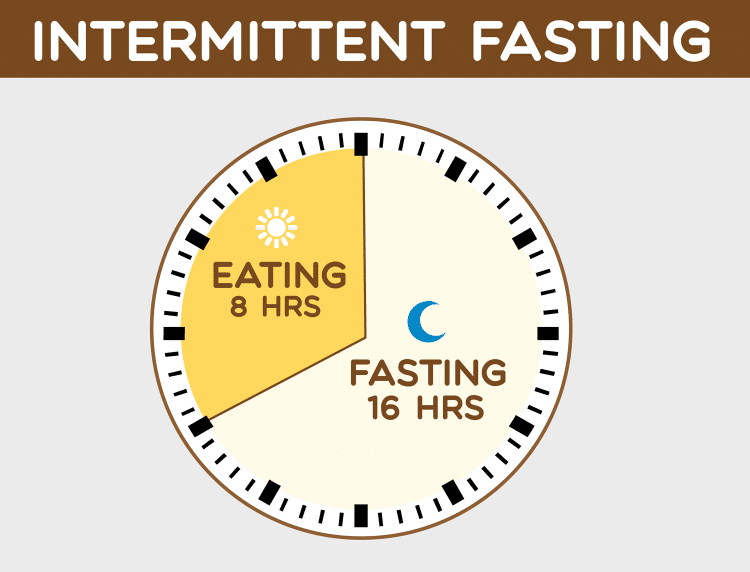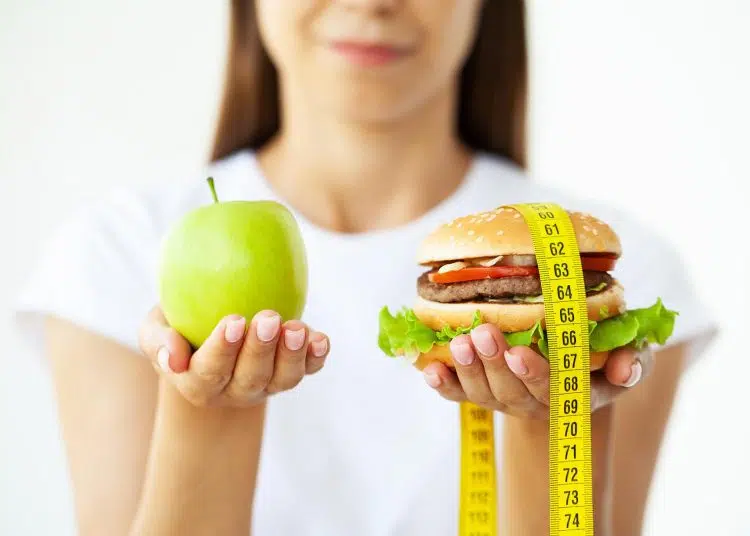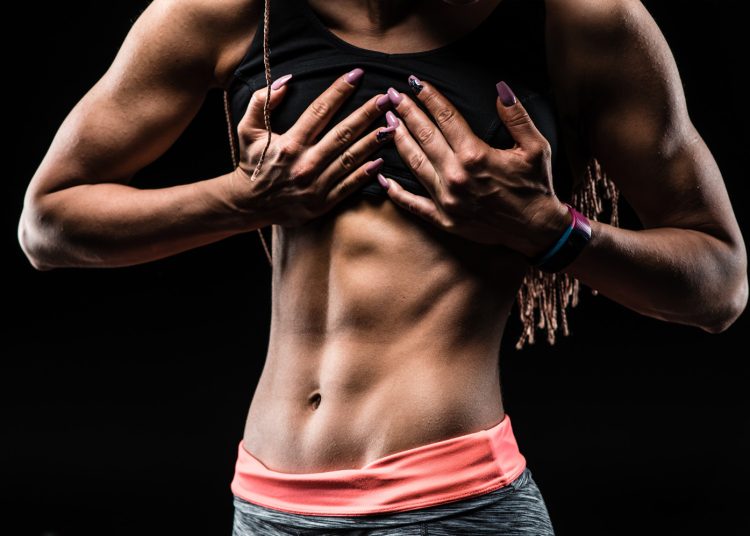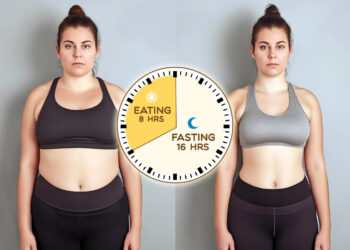Eating for fat loss, performance, and health can often seem very complicated. After all, there are hundreds—probably thousands—of diets to choose from.
However, on closer inspection, a lot of those diets are not as great as they seem. They’re too complicated, too restrictive, or too impractical to follow for long, and some are even bad for your mental and physical health.
I’m a veteran personal trainer and nutrition coach, and it’s my job to help people get in the best shape of their lives. This invariably involves giving exercise AND nutrition advice.
After all, they’re two sides of the same coin.
In my experience, one of the most effective diets is intermittent fasting (IF). Also known as time-controlled eating, IF involves voluntarily going without food for a set time. You then consume your meals and snacks during a predetermined “eating window.”
Studies suggest that time-restricted eating is an effective way to lose weight while lowering the risk of numerous diseases, including type 2 diabetes, metabolic syndrome, and even some cancers (1).
Level Up Your Fitness: Join our 💪 strong community in Fitness Volt Newsletter. Get daily inspiration, expert-backed workouts, nutrition tips, the latest in strength sports, and the support you need to reach your goals. Subscribe for free!
There are several different intermittent fasting strategies, with some of the most popular being:
- 16:8 (fast for 16 hours, 8-hour eating window)
- 20:4
- 12:12
- 24-hour fast
- Day-on/Day-off
- 5:2 (fast for two non-consecutive days, eat normally for five days per week)

Related: Your Complete Guide to Intermittent Fasting
While all these IF methods can be effective, beginners often undermine their progress by making one of eight common mistakes.
In this article, I reveal what those intermittent fasting mistakes are and how to avoid them.
#1. Choosing the Wrong Fasting Window
A fast can be as short as 12 hours or as long as 24 hours or more. Needless to say, the longer you go without food, the more challenging your fast will be. Hunger and cravings increase over time, so the bigger your fasting window is, the more uncomfortable you will probably feel.
The good news is that you don’t have to dive headfirst into a long fast, such as the day-on/day-off method. Instead, beginners should ease gradually into intermittent fasting and start with a shorter fasting window.
16:8 is an excellent place to start for many beginners, as at least some of your fast will be spent asleep. For example:
- 8 pm – dinner (last meal of the day)
- 11 pm – go to bed
- 7 am – wake up (skip breakfast)
- Noon – late breakfast/early lunch
- 4 pm – snack/light meal
- 8 pm – dinner
You can progress to longer fasting windows as you gain experience and get used to going without food.
Summary: Leave 24-hour fasts to the experts! Start with shorter, more manageable fasting windows and only increase when you are comfortable and ready.
Related: I Followed Intermittent Fasting for 30 Days—Here’s What Happened
#2. Making Poor Food Choices During the Eating Window
After going many hours without food, many IF beginners think it’s okay to reward themselves with a junk food blowout. After all, having not eaten anything during your fasting window, you’ll probably be craving candy, potato chips, pizza, or your favorite junk food treat.
However, what your body really needs is an abundance of healthy nutrients—vitamins, minerals, fiber, etc. That’s because your body has been using these substances during your fast, and that nutrient debt needs to be repaid.
Junk food is invariably stripped of any useful nutrients and is the epitome of empty kilocalories. So, instead of chowing down on junk food, your first post-fast meal should be as nutrient-dense as possible. Vegetables, whole grains, fruits, and lean proteins are in—candy and ice cream are out!
Of course, you can enjoy a small treat or two, but you should also endeavor to provide your body with the nutrients it needs first.
Summary: Don’t break your fast with junk food. Instead, build your meals around nutrient-dense foods that provide your body with the vitamins, minerals, fiber, etc., that it needs.
#3. Overeating During the Eating Window

While it’s normal to feel hungry after even a short fast, you need to rein in your appetite and avoid overeating when you have your first post-fast meal. Overeating will overload your digestive system and could leave you feeling bloated and sluggish. It could even upset your stomach.
Avoid this issue by breaking your fast with a small, light, easily digested meal. Plan and prepare this meal in advance to avoid the temptation of eating too much.
Your next meal can be a little larger, as your digestive system should be “back online” by then. Definitely do not hit the all-day buffet at your local diner—while tempting, that would be a recipe for post-fast disaster!
Summary: Resist the urge to break your fast with a feast. Instead, your first post-fast meal should be small, light, nutritious, and easy to digest.
#4. Not Eating Enough Protein During the Eating Window
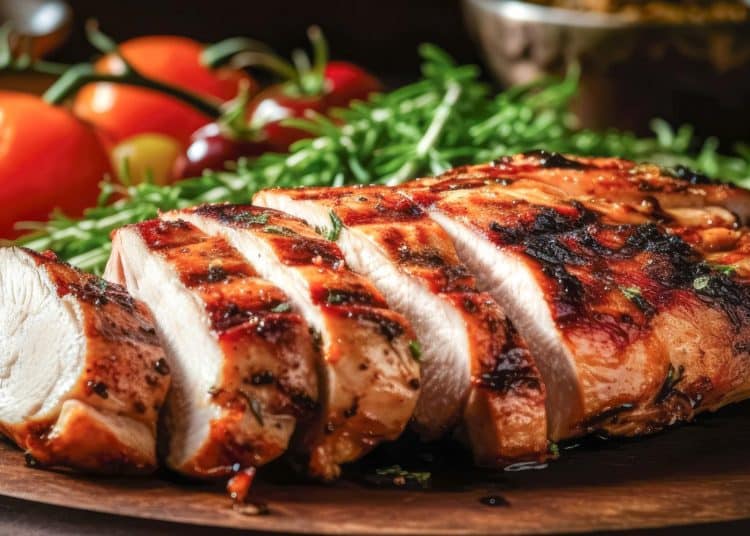
Protein is a critical macronutrient. It’s essential for muscle repair and growth, aids fat burning and weight loss, and offers numerous health and fitness benefits. Whether you are a bodybuilder or not, you MUST eat sufficient protein.
However, that’s easier said than done when you are doing intermittent fasting.
While your actual protein requirements depend on your age, weight, and activity levels, cramming your meals into a short eating window can make getting enough protein a challenge. Consuming too little protein will undermine your intermittent fasting results.
Related: Protein Calculator—Find Your Daily Protein Intake
Level Up Your Fitness: Join our 💪 strong community in Fitness Volt Newsletter. Get daily inspiration, expert-backed workouts, nutrition tips, the latest in strength sports, and the support you need to reach your goals. Subscribe for free!
Avoid this issue by prioritizing protein. Include a good source of protein in all your post-fast meals, and consider adding a protein shake to your diet to ensure you’re getting enough of this valuable nutrient.
Summary: Don’t derail your diet by not eating enough protein. Make protein the cornerstone of all your post-fast meals to avoid protein deficiencies.
#5. Not Drinking Enough Fluids During the Fast
While you can go for many days without food, happily burning body fat for fuel, you won’t survive for long without water. The human body is roughly 60% water, and it uses water for a host of critical functions, including lubrication, temperature regulation, and transport of oxygen and nutrients—your blood is 90% water!
Related: 7 Ways to Tell If You’re Hydrated Enough or at Risk of Dehydration
Beginners often think that fasting means you are only allowed to drink during the designated eating window, but this generally isn’t the case. Instead, most fasts allow you to drink unlimited amounts of kilocalorie-free beverages. That said, most frown upon artificially sweetened drinks such as diet soda.
So, avoid dehydration by consuming plenty of water and other kilocalorie-free liquids. Good options include:
- Water (still or sparkling)
- Water with lemon/lime slices (no pulp)
- Black coffee
- Unsweetened tea (black, green, white, oolong)
- Unsweetened herbal or fruit tea
- Electrolyte water (unsweetened, zero-calorie)
- Apple cider vinegar (diluted in water)
Summary: Just because you can’t eat during a fast doesn’t mean you can’t drink. Avoid dehydration by consuming plenty of kilocalorie-free beverages, including water, herbal teas, and black coffee.
#6. Ignoring Electrolyte Needs While Fasting
Leading on from the point above, you don’t just need hydrating fluids during a fast—you need electrolytes, too. Electrolytes are minerals that help regulate fluid balance, muscle function, nerve signaling, and overall hydration. Without them, you may experience headaches, fatigue, muscle cramps, and dizziness, especially during longer fasts.
The electrolytic minerals include:
- Sodium
- Potassium
- Magnesium
- Calcium
- Chloride
- Phosphate
We normally get electrolytes from the food we eat, with vegetables, fruits, and grains being prime sources. Of course, going without food for extended periods means you won’t be consuming these substances, unless you a) take a supplement, e.g., Redmond Re-Lyte or Nunn Sport, or b) consume specific kilocalorie-free beverages, such as:
- Mineral water (naturally contains sodium, magnesium, and calcium)
- Electrolyte-enhanced water (zero-calorie versions like Smartwater or Essentia)
- Unsweetened coconut water (some brands have near-zero calories, but most contain small amounts)
- DIY electrolyte water (water + pinch of salt + potassium chloride, e.g., Lite Salt)
- Diluted apple cider vinegar (contains trace minerals)
Regardless of how you get them, it’s important to remember that low levels of electrolytes are responsible for many of the adverse side effects associated with fasting, especially headaches and muscle cramps. Getting enough of these critical minerals will make fasting much more comfortable.
Summary: Avoid headaches, cramps, dizziness, etc., by consuming electrolytes during your fast, either in mineral-rich—but kilocalorie-free—beverages or in supplements.
#7. Expecting Immediate Results
Fasting is a reliably effective way to lose weight and get lean. It can also help protect you from the risk of type 2 diabetes and numerous other health issues. Studies suggest that fasting could even help you live longer (2).
That said, almost all the benefits of IF are cumulative. That is to say, they add up over time. A single fast won’t do anything for you, so don’t be disappointed if you feel that your one and only fast produced no noticeable results.
Related: I Stuck to an 8-Hour Eating Window for 3 Weeks — Here’s What Happened
It’ll probably take several weeks or even months for the power of intermittent fasting to become apparent, and the real magic only happens after years of consistent fasting. Like any diet, the longer you stick with IF, the better your results will be.
So, while you’ll probably start to lose weight after a week or two, don’t expect to lose more than the usual couple of pounds per week. While that might not sound very encouraging, it’s important to remember that small, regular weight loss is almost always better than losing a lot of weight quickly, only to regain it just as fast.
Summary: It’ll take more than a couple of fasts for IF to produce results. Be prepared to continue intermittent fasting for weeks, months, or even years to enjoy all the benefits on offer.
#8. Not Listening to Biofeedback
Only you know how you’re doing during an intermittent fast. How your body responds will determine if you need to adjust your IF schedule or if this diet strategy is unsuitable for you. The signals your body sends you are called biofeedback—you should pay attention to the messages you’re being sent and act accordingly.
Biofeedback to expect intermittent fasting includes:
- Energy Levels – Feeling consistently sluggish or fatigued? Your fasting window or food choices may need adjusting.
- Hunger and Satiety – Are you ravenous during your fast or overeating when you break it? Your meal timing or macronutrient balance might be off.
- Mood and Focus – Poor concentration, irritability, or brain fog could indicate blood sugar fluctuations or electrolyte imbalances.
- Workout Performance – Struggling to maintain strength or endurance? You may need to tweak your pre/post-workout nutrition or fasting duration.
- Sleep Quality – Waking up frequently or struggling to fall asleep? Late eating, fasting too long, or electrolyte issues could be factors.
- Digestive Health – Bloating, constipation, or bowel irregularity can signal that your food choices aren’t supporting optimal digestion.
Summary: Don’t ignore biofeedback—it’s your body’s way of communicating. Adjust your IF schedule according to how you’re feeling, and you’ll find the entire process more comfortable and rewarding.
Closing Thoughts
In terms of simplicity and effectiveness, intermittent fasting is hard to beat. Simply don’t eat for extended periods to lower your kilocalorie intake and promote fat burning while boosting your health.
However, it’s still possible to make mistakes during an intermittent fast, and those mistakes can undermine your progress.
Avoid the eight IF beginner blunders in this article, and your results—and entire fasting experience—will be infinitely more rewarding.
References:
- Cho Y, Hong N, Kim KW, Cho SJ, Lee M, Lee YH, Lee YH, Kang ES, Cha BS, Lee BW. The Effectiveness of Intermittent Fasting to Reduce Body Mass Index and Glucose Metabolism: A Systematic Review and Meta-Analysis. J Clin Med. 2019 Oct 9;8(10):1645. doi: 10.3390/jcm8101645. PMID: 31601019; PMCID: PMC6832593.
- Strilbytska O, Klishch S, Storey KB, Koliada A, Lushchak O. Intermittent fasting and longevity: From animal models to implication for humans. Ageing Res Rev. 2024 Apr;96:102274. doi: 10.1016/j.arr.2024.102274. Epub 2024 Mar 17. PMID: 38499159.

